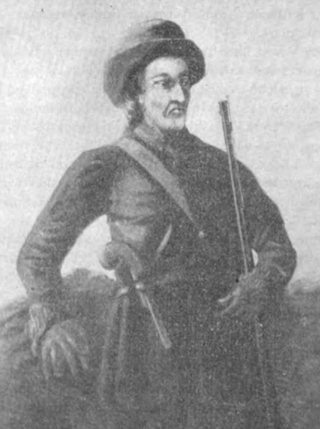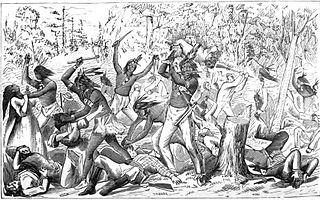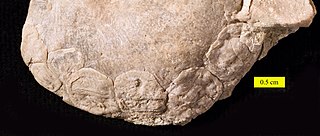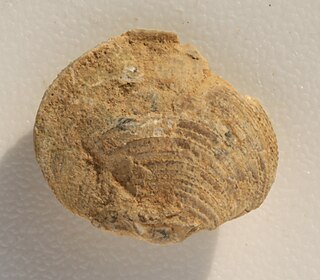
Urban Clarence "Red" Faber was an American right-handed pitcher in Major League Baseball from 1914 through 1933, playing his entire career for the Chicago White Sox. He was a member of the 1919 team but was not involved in the Black Sox scandal. In fact, he missed the World Series due to injury and illness.

Guyasuta was an important Native American leader of the Seneca people in the second half of the eighteenth century, playing a central role in the diplomacy and warfare of that era. Although he became friends with George Washington in 1753, he sided with the French against Britain during the French and Indian War and fought against the British in Pontiac's War. He later supported the British during the American Revolutionary War. In his final years, he engaged in peacemaking to end the Northwest Indian War.

Simon Girty was an American, Pennsylvania-born frontiersman. As a child he and his brothers James and George were captured and adopted by Native Americans. During the American Revolutionary War, after attempting to join the Pennsylvania Continental Army he became a Loyalist and an agent of the British Indian Department, serving as a guide and interpreter with indigenous warriors who fought against American troops. He played a similar role during the Northwest Indian War.

The Indian Creek Massacre occurred on May 21, 1832 with the attack by a party of Native Americans on a group of United States settlers in LaSalle County, Illinois following a dispute about a settler-constructed dam that prevented fish from reaching a nearby Potawatomi village. The incident coincided with the Black Hawk War, but it was not a direct action of the Sauk leader Black Hawk and conflict with the United States. The removal of the dam was asked, was rejected by the settlers and between 40 and 80 Potawatomis and three Sauks attacked and killed fifteen settlers, including women and children. Two young women kidnapped by the Indians were ransomed and released unharmed about two weeks later.

Sir Richard Butler was an Australian politician. He was a member of the South Australian House of Assembly from 1890 to 1924, representing Yatala (1890–1902) and Barossa (1902–1924). He served as Premier of South Australia from March to July 1905 and Leader of the Opposition from 1905 to 1909. Butler would also variously serve as Speaker of the House of Assembly (1921–1924), and as a minister under Premiers Charles Kingston, John Jenkins and Archibald Peake. His son, Richard Layton Butler, went on to serve as Premier from 1927 to 1930 and 1933 to 1938.
Edgar Leslie was an American songwriter.
The following is a list of players, both past and current, who appeared in at least one game for the New York Yankees franchise, including the 1901–02 Baltimore Orioles, and the 1903–12 New York Highlanders.

The Craniidae are a family of brachiopods, the only surviving members of the subphylum Craniiformea. They are the only members of the order Craniida, the monotypic suborder Craniidina, and the superfamily Cranioidea; consequently, the latter two taxa are at present redundant and rarely used.There are three living genera within Craniidae: Neoancistrocrania, Novocrania, and Valdiviathyris. As adults, craniids either live freely on the ocean floor or, more commonly, cement themselves onto a hard object with all or part of the ventral valve.

Brachiopods, phylum Brachiopoda, are a phylum of trochozoan animals that have hard "valves" (shells) on the upper and lower surfaces, unlike the left and right arrangement in bivalve molluscs. Brachiopod valves are hinged at the rear end, while the front can be opened for feeding or closed for protection. Two major categories are traditionally recognized, articulate and inarticulate brachiopods. The word "articulate" is used to describe the tooth-and-groove structures of the valve-hinge which is present in the articulate group, and absent from the inarticulate group. This is the leading diagnostic skeletal feature, by which the two main groups can be readily distinguished as fossils. Articulate brachiopods have toothed hinges and simple, vertically oriented opening and closing muscles. Conversely, inarticulate brachiopods have weak, untoothed hinges and a more complex system of vertical and oblique (diagonal) muscles used to keep the two valves aligned. In many brachiopods, a stalk-like pedicle projects from an opening near the hinge of one of the valves, known as the pedicle or ventral valve. The pedicle, when present, keeps the animal anchored to the seabed but clear of sediment which would obstruct the opening.

Pleurotomaria is an extinct genus of sea snails, marine gastropod molluscs in the family Pleurotomariidae.

Argyrotheca is a genus of very small to minute lampshells. All species share a large pedicel opening, one ridge on the inside of the pedunculate valve, pits in a diamond pattern on the inside of both valves, and without radial ridges that end in tubercles. It occurs in depths between 6 and 1300 m. It is known since the latest Cretaceous.

The Abo Formation is a geologic formation in New Mexico. It contains fossils characteristic of the Cisuralian epoch of the Permian period.

Cleiothyridina is an extinct genus of brachiopods.

Paladin is a genus of trilobite which lived 354–259 Ma, during the Late Paleozoic era; more specifically, during the Carboniferous and Permian periods. It was widespread: fossils have been discovered in what are now East Asia, Europe and North America.

Kutorginates (Kutorginata) are an extinct class of early rhynchonelliform ("articulate") brachiopods. The class contains only a single order, Kutorginida (kutorginides). Kutorginides were among the earliest rhynchonelliforms, restricted to the lower-middle part of the Cambrian Period.

Rafinesquina is an extinct genus of large brachiopod that existed from the Darriwilian to the Ludlow epoch.
Crurithyris is an extinct genus of brachiopod belonging to the order Spiriferida and family Ambocoeliidae.
Beecheria is an extinct genus of brachiopod belonging to the order Terebratulida and family Beecheriidae. Fossils of this genus have been found in Mississippian to Permian beds in Eurasia, Australia, North America, and South America. The genus was part of the Levipustula fauna characteristic of cold water conditions. "Nests" of Beecheria have been found in fossil low temperature hydrothermal vent communities from the early Carboniferous in Newfoundland.

Marginifera is an extinct genus of brachiopod belonging to the order Productida. Specimens have been found in Carboniferous to Triassic beds in Asia, Europe, Madagascar, and North America.

Amphissites is an extinct genus of ostracod belonging to the suborder Beyrichicopina and family Amphissitinae. Species belonging to the genus lived from the Devonian to the Permian in Europe, North America, Australia, and east Asia. The genus were likely deposit-feeders, and may have survived briefly into the Triassic.
















